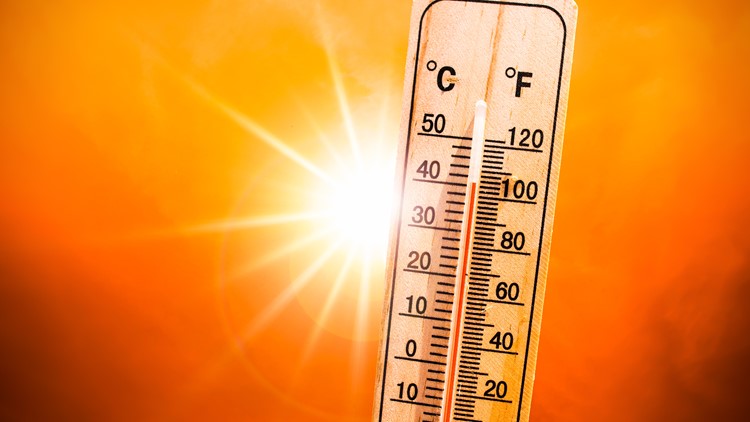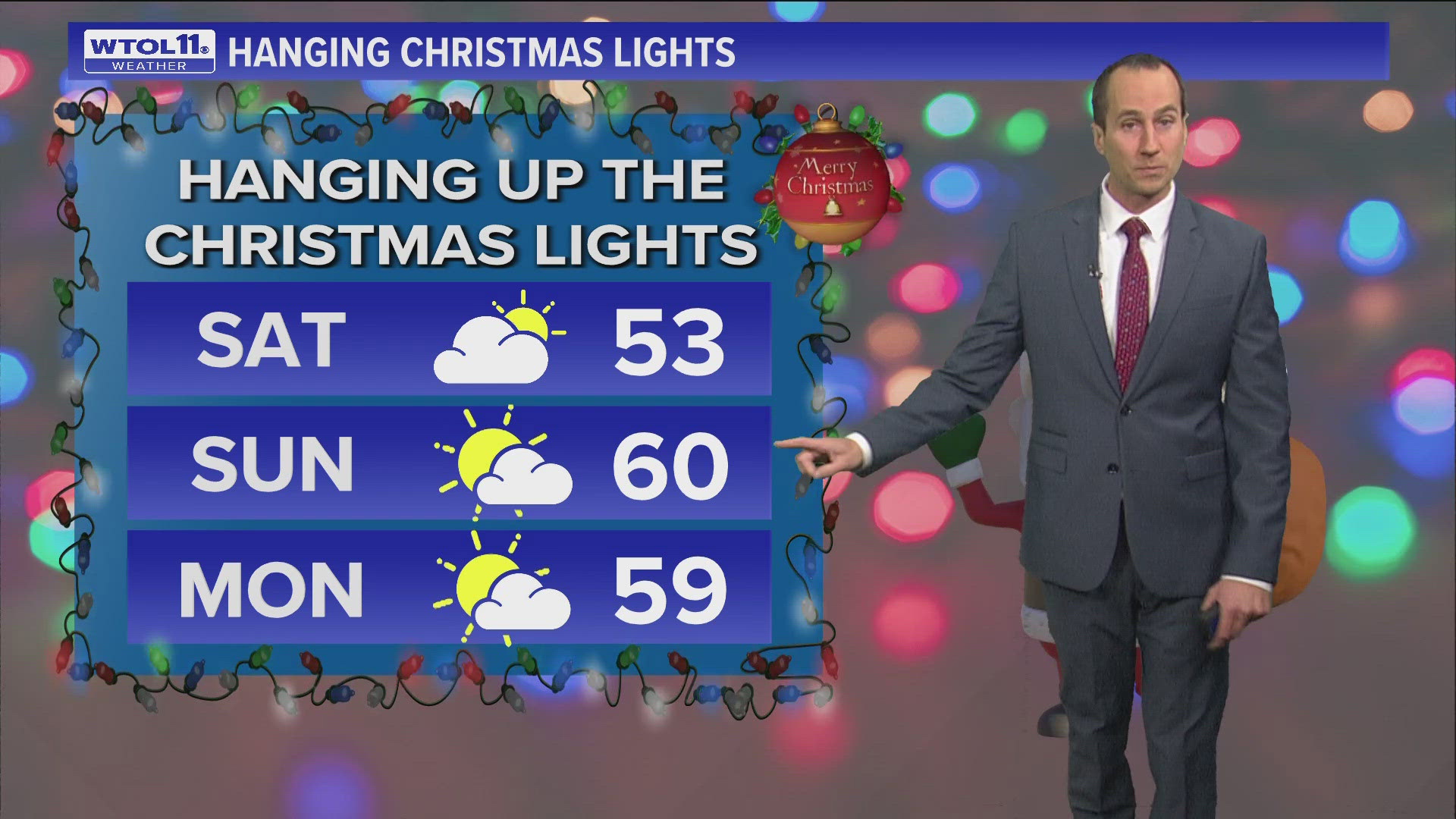TOLEDO, Ohio — The start of meteorological summer is just getting underway as it arrived June 1.
Meteorologists and scientists define summer as the three warmest months of the calendar year - June, July and August. This not only offers a consistent seasonal schedule, but also is meaningful for evaluating a consistent data set especially when it comes to climatology and climate change.
The evidence is clear: our summer seasons are growing considerably warmer at an alarming pace. Chances are you have felt it.
Some of this warming is attributed to greenhouse gas emissions and human impact on native land and land use. As planet-warming gases from fossil-fuel burning increase global average temperatures, we’re experiencing more extreme heat events.
Extreme heat is most apparent in the summer since it's the hottest time of year.

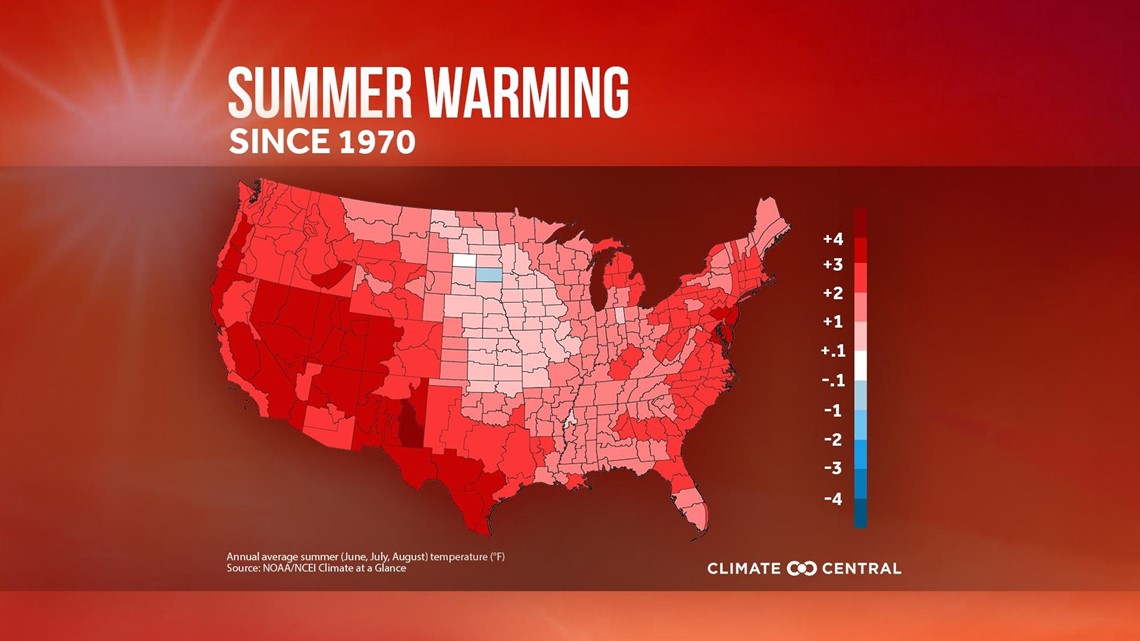
Let’s look at the evidence. Since 1970, data from 246 locations was analyzed and it was found that 96% of locations have a warming summer climate. Of those locations, 53% saw a warming of 2 degrees or more, with Toledo being included.


Furthermore, 81% of the nation had seven or more days per year above their 1991-2020 summer normal temperature. Toledo came in three times this national average at 21 days above the summer normal temperature.

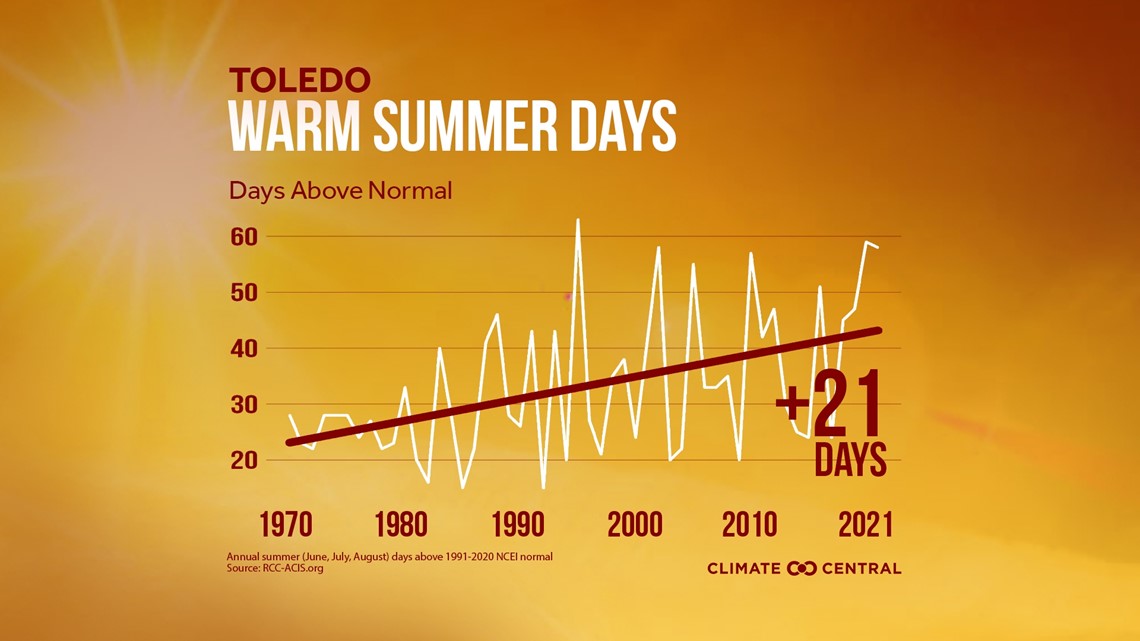
Going even further back, records since 1873 indicate that five of the 10 warmest average summer temperatures have happened in the past 20 years. 2020 and 2021 are in the top three.
Our summer season has grown warmer, with the Toledo area most recently experiencing some of the warmest summer temperatures in recorded history.

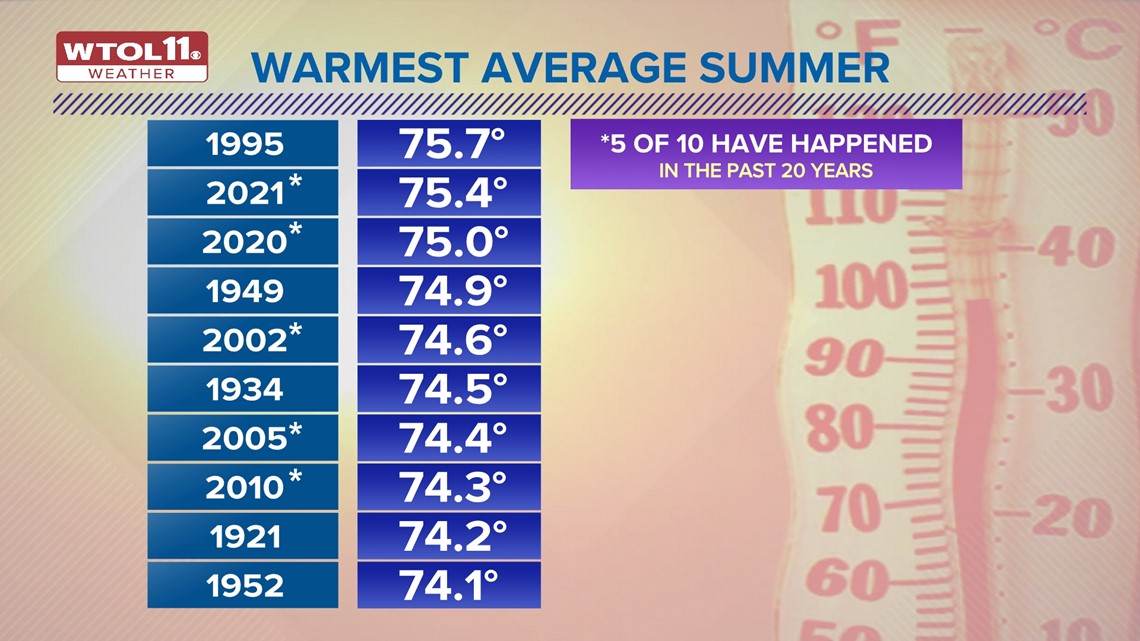
Exposure to extreme heat makes it difficult for our bodies to cool off, resulting in heat-related illnesses including heat cramps, heat exhaustion, and potentially fatal medical emergencies like heat stroke. Summer heat can also exacerbate poor air quality by trapping harmful pollutants close to the Earth’s surface and creating ground-level ozone.
These pollutants can exacerbate respiratory issues in people with asthma and other lung diseases.


